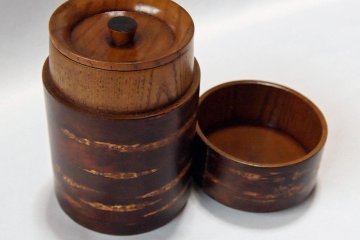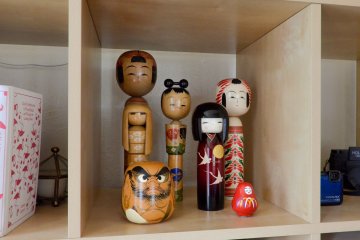Overview
The Tohoku region of northern Honshu is home to six prefectures - Akita, Aomori, Fukushima, Iwate, Miyagi and Yamagata. The traditional crafts of these prefectures cover a wide spectrum of traditions and techniques. From cherry bark accessories and cypress wood lacquerware to ethereal blue porcelain and powerful iron casting traditions, the traditional crafts of Tohoku represent unique expressions of beauty. Here is a simple introduction to some of the traditional crafts found in the Tohoku region.
Akita
Despite meaning 'birch craft', Akita prefecture's traditional kaba-zaiku is created from cherry tree bark. Light, durable and water resistant, kaba-zaiku started out as accessories before expanding into containers and display items. With the final form determining which of the three traditional crafting techniques are used, the final result of subdued colouring and natural patterning is truly beautiful.
Aomori
Established in the Edo period, Aomori prefecture's traditional Tsugaru nuri lacquerware is a beautifully refined expression of practicality and durability. Based on cypress wood, the multi-layered lacquering process requires months of work. Several specialised coating techniques are still used to create the uniquely stylised patterns of the finished product.

Fukushima
Made from locally collected grindstone, the obori-soma yaki of Fukushima prefecture is a kind of porcelain made distinct by its incredibly ethereal blue fissure-patterning. Not only visually impressive, the process of 'cracking' the material when baking adds an aural appeal while the double-firing technique is said to be unique to Fukushima.
Iwate
Iwate prefecture's Iwayado-tansu are traditional woodworked chest of drawers. Highlighted by ornamental metal-worked handles and corners, a set of Iwayado-tansu chest of drawers may feature anywhere up to one hundred intricately embossed metal fittings. These fittings complement a highly lacquered wooden finish that gives the final product a rich deep colouring.
Miyagi
Miyagi prefecture's dento kokeshi wooden dolls can be created using several historical styles, but the basic one is a simple but charming slim figure and head. Each doll is handmade, with the craftsperson, involved from the very beginning using techniques and features representative of the local area, imparting their individuality to each doll.

Yamagata
With over one thousand years of history, the cast iron crafting heritage of Yamagata prefecture's Yamagata imono is a deep one. Also used in industry castings, the artisan tradition features kettles, tea pots and statues that all rely on any number of techniques to help create the fine textures and details that Yamagata imono is famous for.









